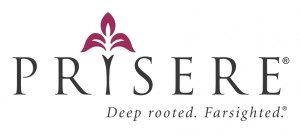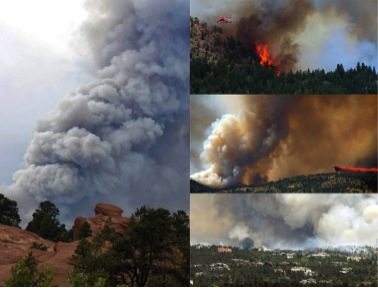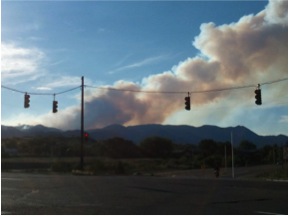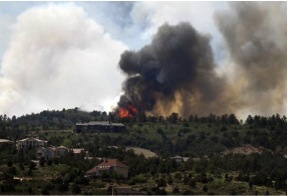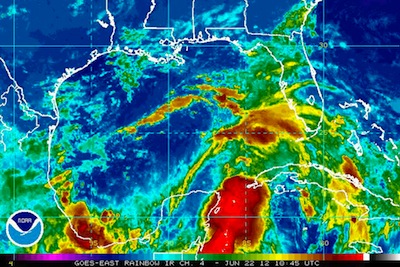The Women’s Business Enterprise National Council (WBENC) , has certified Prisere LLC as a women-owned business. Founded in 1996, WBENC is the nation’s leading advocate of women-owned businesses as suppliers to America’s corporations. WBENC is the largest third-party certifier of businesses owned and operated by women in the United States. We recognize the commitment to supplier diversity that is embraced by corporations and government agencies today and are pleased to be formally certified. The Center for Women & Enterprise is the New England regional partner to WBENC and has worked with over 30,000 women-owned businesses since its inception in 1995. We look forward to working with companies that seek to expand access to new, competitive suppliers.
Supporting Women-Owned Businesses
January 3rd, 2015Reflecting on the Past With Gratitude
January 2nd, 2015As I look forward to the achieving the goals set for my business in 2015, I am also taking time to pause, reflect and take stock of what has been accomplished to date. One of the achievements of which I am most proud is that our law firm Stroock & Stroock & Lavan LLP incorporated Prisere LLC as a limited liability company in the State of Delaware and registered it as a foreign company to do business in other states. Stroock’s very talented intellectual property attorneys also successfully registered trademarks for Prisere, its tagline and its logo. Stroock provided pro bono legal services to Prisere LLC after we were matched by the Neighborhood Entrepreneur Law Project (NELP) of the New York City Bar. The City Bar launched the project in 2003 to help entrepreneurs with legal services to get their businesses started on as sound a footing as possible. The project provides volunteer attorneys who guide small businesses through such matters as incorporation and tax issues, contracts and agreements, commercial lease negotiations, copyrights, trademarks, and patents. Volunteer attorneys also offer presentations and legal clinics at community-based organizations on issues of concern to micro-entrepreneurs. To date, NELP has partnered with more than 100 law firms, 25 corporate legal departments, and 30 community-based organizations to assist more than 14,000 clients through the provision of brief services, direct representation, legal clinics, and community presentations.
I was particularly delighted to be connected with the team at Stroock, not just for their impressive legal talent, but also for their leadership in providing critical legal pro bono services to small businesses in response to national disasters. I had benefited once before from Stroock’s project for small business disaster relief when, after 9-11, I participated in mediation with the landlord of my office building to resolve a dispute. The dispute centered around treatment of the rent for the days when the office was closed after we were evacuated. The issue was successfully resolved, as Stroock had set up a mediation program to address these inevitable disputes in a fair and efficient manner.
The business of Prisere LLC grew from my book after leaders of the New Orleans Small Business Development Centers urged me to find a way to work on enabling disaster-resilient small businesses as a full-time effort, not just part-time book promotion. And, in another of life’s unusual coincidences, I also referenced Stroock & Stroock & Lavan LLP in that very book – published years before I had my first meeting with them. In Prepare for the Worst, Plan for the Best: Disaster Preparedness and Recovery, second edition, I wrote (page xvii) of how government disaster relief programs often harm small businesses more than help them. As an example, I quoted the Battery Park City Broadsheet (February 27 – March 13, 2002 edition), the community newspaper of the residential neighborhood in the shadow of the World Trade Center, which wrote about the management of HUD (U.S. Department of Housing and Urban Development) funds for the post-9/11 recovery efforts:
HUD’s first allocation towards the recovery effort is $700 million, part of which is earmarked for small businesses. Unfortunately, what most small business owners have found is that receiving a piece of the $700 million is about as likely as holding a winning PowerBall ticket. From the Ground Up, an organization comprising more than 100 small businesses in Lower Manhattan, is dedicated to making the distribution of aid fair, adequate and easier to procure. Kevin Curnin, a lawyer with Stroock & Stroock & Lavan LLP, advised the group. He said agencies allocating financial aid in most cases have defined “small business” as having as many as 500 employees. “Five hundred is not small,” Curnin said. “This includes massive firms who have insurance. Put a big fish in a small pond and that big fish is going to take a disproportionate share of the resources. It is impractical and wrong…” Aid is not getting to the businesses that really need it, Mr. Curnin said. Many pizza parlors and shoe repair shops – businesses that Mr. Curnin argues make a neighborhood a neighborhood – did not have adequate insurance or a safety net that would allow them to survive being closed for months.”
I also included this quote from the Battery Park City Broadsheet in the first edition of the book, published in 2002. I never would have guessed that the year following publication of the book, the City Bar would establish its Neighborhood Entrepreneur Law Project through which, years later, I would be introduced to the Stroock team in person. Nor could I have anticipated the extraordinary work that Stroock would go on to do to help small businesses impacted by Hurricane Katrina and Super Storm Sandy. And now, thanks to Stroock’s efforts, Prisere has its trademarks and is building a platform for growth and social impact. So I look forward to 2015, as we build on all of our efforts.
New Year’s Resolutions for 2015
January 1st, 2015I have written down my New Year’s Resolutions for 2015. Rather than set ambitious goals, and experience disappointment when I fail to realize them, I have set fewer, more attainable goals in the hope of maintaining my resolve through December 31. I remember the old saying that having too many goals is the same as having none at all. So I set three goals for the business this year. And while others working in the field of business continuity, such as the Institute for Business & Home Safety, advise New Year’s Resolutions to protect the business, I am taking a different approach in 2015. My resolutions all support the goal of building a platform for sustainable business growth -which, of course, results in a more resilient business, able to work through whatever disruptions may come. So I am going to improve my systems for resource management, whether the resource is time, money, man-hours or even digital assets. I expect that will reduce my level of personal stress. I am going to eliminate whatever isn’t working for me – whether it be clients whose goals no longer align with my own or toxic people who enervate me. Finally, I am going to make more time for leisure and renewal. I will proactively plan to avoid burnout by reducing my work hours and protecting my free time from those who would encroach upon it. Those are my three resolutions, inspired in part, by the work JJ Ramberg is doing on her program “Your Business” that airs Sunday mornings on MSNBC. Each week, she tries out a new resolution and sees who well she can stick to it. She has candidly disclosed that the results have been uneven. I’ll report back mid-year as to how I have fared with my three resolutions for 2015.
Complacent in Colorado
June 26th, 2012Trevor Dierdorff is the founder, president and chief executive officer of Amnet, a company that designs, implements and supports computer networks for businesses with 10 – 200 computers. Every year since 2005, readers of the Colorado Springs Business Journal have selected Amnet as “Best IT Consulting Company”. I met Trevor in Colorado Springs at the annual awards luncheon of the Colorado Small Business Development Centers, where my hosts took me to see the beautiful Garden of the Gods and Pikes Peak, areas now affected by severe wildfires. I want to extend my thanks to him for contributing this guest blog to share his thoughts and his photographs about the wildfires in his community.
Complacent Colorado: Now Thinking About Disaster Preparedness and Business Continuity by Trevor Dierdorff
Fires raging just west of Colorado Springs have really brought disaster preparedness to the forefront here. In Colorado Springs, we are pretty insulated from most disasters. We are too far inland for hurricanes and big earthquakes. We don’t get tornadoes like the mid-west. We get a little snow here, but it has been fifteen years since we had a decent blizzard so we Coloradoans get a little complacent about disasters and disaster preparedness.
As of today, the Waldo Canyon Fire has consumed nearly 6,000 acres and is only 5 percent contained. While no homes or businesses have been destroyed (yet), entire cities and neighborhoods have been forced to evacuate. Highway 24 west of town has been shut for days and one of my employees lives on the other side of the roadblock. He was able to go 80 miles around the roadblock to get a hotel in town.
What if your business building was intact, but the police or fire department was going to keep you out of it for days or even weeks? Could you still serve your customers? Probably not, if you own a restaurant, retail store or hotel. Of course, that answer varies depending on what type of business you have and whether or not you have remote access.
Does your insurance cover a situation like this? Loss of Business Income Insurance does not typically cover your financial losses in this situation unless your structure is damaged which caused your losses. You may want to add this coverage if this is concern to you.
Here are some questions that you should ask yourself and then document your answers as part of your business continuity plan.
What would you need to do in the first 24 hours, after 3 days, after one week? These answers will probably be different.
What are some likely scenarios? Start with these.
What are some extreme scenarios? Don’t leave these out, but certainly cover the likely ones first.
What documentation have you done of your business assets and IT infrastructure?
Do you have a process to contact your clients and your staff?
What would you tell your staff to do?
Who has access to your Business Continuity Plan if you are unavailable?
This is just a short list of questions to get you thinking. Remember, everything you do before a disaster strikes determines the likelihood of remaining in business after the disaster.
Network Security Measures on Vacation
June 24th, 2012 As the summer travel season begins, hackers will no doubt increase their attempts to exploit vulnerabilities in airports and hotels. Business travelers and those who conduct some business while on vacation should exercise care when using unsecured WiFi networks in airport, hotels and other public places. In addition to personal identifying information, business and trade secrets may be at risk. The FBI recently advised travelers of the risks of malware attacks to laptop computers over hotel WiFi networks. Exercise caution yourself and remind your employees that all of the usual security protocols apply even when using the business laptop, tablet or cell phone while on vacation. And given what national security officials consider to be an increased threat risk, consider the following:
As the summer travel season begins, hackers will no doubt increase their attempts to exploit vulnerabilities in airports and hotels. Business travelers and those who conduct some business while on vacation should exercise care when using unsecured WiFi networks in airport, hotels and other public places. In addition to personal identifying information, business and trade secrets may be at risk. The FBI recently advised travelers of the risks of malware attacks to laptop computers over hotel WiFi networks. Exercise caution yourself and remind your employees that all of the usual security protocols apply even when using the business laptop, tablet or cell phone while on vacation. And given what national security officials consider to be an increased threat risk, consider the following:
- Prepare before the trip. Before you travel, confirm that your anti-virus software is updated on your laptop and all sensitive files are securely encrypted. You may wish to change your passwords both before and after travel.
- Limit your online activities to when you have a secure Internet connection. Security breaches more commonly occur when travelers are using WiFi or even worse, free WiFi. Sometimes “free” can be very expensive! If you can, refrain from online work until you are sure you are certain of a safe Internet connection.
- Stay current on alerts. The latest travel-related scam involves phony airline e-mails offering convenient online check-in. The recipient clicks the link and is unaware that his information is being tracked from that moment.
And be aware of your environment. When you have the laptop at the hotel pool, you will be less vigilant than you would be while sitting at your desk. Don’t let your relaxed setting lull you into taking needless risks.
And the Really Big Threat Has Yet to Surface
June 23rd, 2012I chose this image from stock photography to accompany this blog post both for the refreshing effect as we experience scorching heat, and for the symbolism. Icebergs are more dangerous for what they conceal as for what they reveal. The depth of an iceberg can exceed the height of a Manhattan skyscraper, making it very risky to the unsuspecting sailor. So it is with public finances, as our long-term liabilities remain obscured but what is above the surface is scary enough. And one community has taken desperate measures that may become increasingly common as the economy struggles.
North Las Vegas, the fourth largest city in Nevada, has declared a state of emergency. The city invoked a rarely used law to mobilize resources to respond to unforeseen disasters and invoke emergency powers. But it wasn’t an earthquake or other extreme weather event that caused the city’s crisis. North Las Vegas is responding to a fiscal emergency. Years of declining tax revenues, growing expenses and rising joblessness led city officials to apparently conclude that they had exhausted their options.
North Las Vegas is among the most distressed cities in a troubled state. Nevada has the highest unemployment rate in the country and a crisis in the rate of home foreclosures and personal bankruptcies. But while the financial pressures are severe, the disaster declaration may be over-reaching. Two cities in neighboring California, Stockton and Los Angeles, attempted similar emergency declarations that could not survive legal challenges. Officials in Buffalo, NY were more successful when a court upheld a freeze on public employee wages, allowing the city time to address its deficit. North Las Vegas officials concede that they are not experiencing a Hurricane Katrina-like event in their city. But the disaster declaration will allow them to suspend scheduled increases in the salaries of city workers and suspend other contracts. The question remains – these short-term measures only buy time. What are the unseen, longer-term costs? And what happens when a real (i.e., not contrived) disaster strikes?
It’s That Time of Year Again
June 22nd, 2012The National Hurricane Center has issued an advisory predicting that thunderstorms and heavy rainfall in the southern Gulf of Mexico have a 70 percent chance of becoming a tropical cyclone over the weekend. The consensus among the forecasters is that 2012 will not be a severe storm season. Let’s hope that they are correct.
The Real Finance Minister of India
June 21st, 2012India’s summer monsoon season begins in June and now that it has arrived, the country’s weather forecasters predict a normal season. This is welcome news as more than two thirds of India’s population of 1.2 billion people are employed in the agricultural sector. Their livelihoods are dependent of a “good” monsoon season, when 80% of the annual rainfall occurs. Owing to the state of irrigation, half of India’s crops depend upon adequate rain. Indians consider the monsoon to be the country’s real finance minister: a good season drives economic development. And while we typically associate monsoons with India, they affect most other countries in Southeast Asia, such as Thailand where the severe 2011 monsoon season resulted in catastrophic flooding. It is extraordinary to think of the extent to which most of the world’s population depends on a critical balance of nature: too little rain and we have drought, too much and we have flooding. A “good” monsoon season is like Goldilocks’ porridge; it is just right. In the United States, where less than 5% of our population works in the agricultural sector, we may be less sensitive to such considerations. I took this photograph, by the way, near the iconic image of India, the Taj Mahal. I was so struck by the image of someone going about her ordinary business near this spectacular monument in marble that I wanted to remember it.
SBA Simplifies Online Disaster Loan Application
June 20th, 2012This week, the U.S. Small Business Administration published its revised disaster recovery loan application. Until now, the SBA relied on an electronic loan application that guided applicants through a sequence of 80 screens, based on responses to questions to assess eligibility. The online application bore no resemblance to the paper form of the application, complicating the process for those who like to follow their notes as they work through the screens. The new version of the electronic loan application is identical to the paper form with three pages of information required for business loans.
The new online application can be found at https://disasterloan.sba.gov/ela. The SBA is offering multiple channels to access assistance as small businesses and their advisers become familiar with the new application. A “Help” link appears at the top of each page of the loan application, which directs applicants to online support. In addition, the SBA offers a dedicated disaster customer service line at 1-800-659-2955 or by e-mail at disastercustomerservice@sba.gov. Further information about the disaster assistance program is available at www.sba.gov/disaster The intent of the new online application is to reduce the burden on applicants and eliminate the confusion resulting from the differences between the paper and electronic versions. Applicants should also consider sharing their experiences with the new application, both positive and negative, with their elected representatives. Is the SBA a more welcoming partner to work with small businesses? Revising the online loan application is certainly a step in the right direction.
U.S. Patent and Trademark Office Alerts Small Businesses
June 19th, 2012The U.S. Patent and Trademark Office has issued an advisory that companies with which it is not affiliated are harvesting trademark registration information from the USPTO’s online databases to solicit applicants by deceptive means. The companies use names that appear to resemble the UPSTO name, such as including “United States” or “U.S.” in their titles. They may also use graphic elements in their correspondence to appear as official government documents. The solicitation asks the trademark applicant to pay additional required fees. The USPTO website has posted examples about misleading solicitations issued by companies pretending to be conducting official business related to trademark applications. The applicants receiving these misleading solicitations tend to be individuals or small businesses, as larger corporations are too savvy to be so misled. Before responding to any correspondence concerning your trademark application, consult your attorney. If you filed the application yourself without legal assistance, you may seek advice from TMFeedback@USPTO.gov Scan and e-mail a copy of the correspondence you received in connection with your trademark application to TM Feedback and they will advise you if what you received was a legitimate communication from the USPTO.

